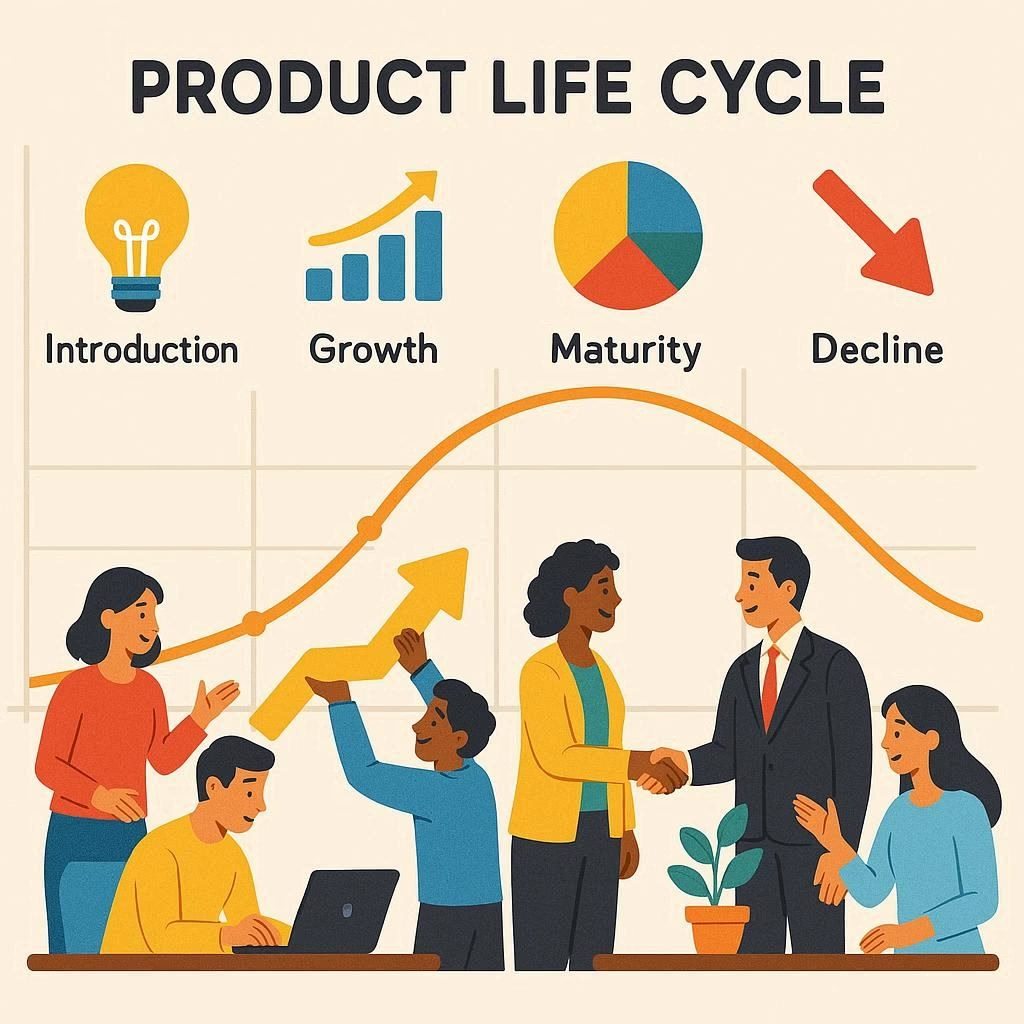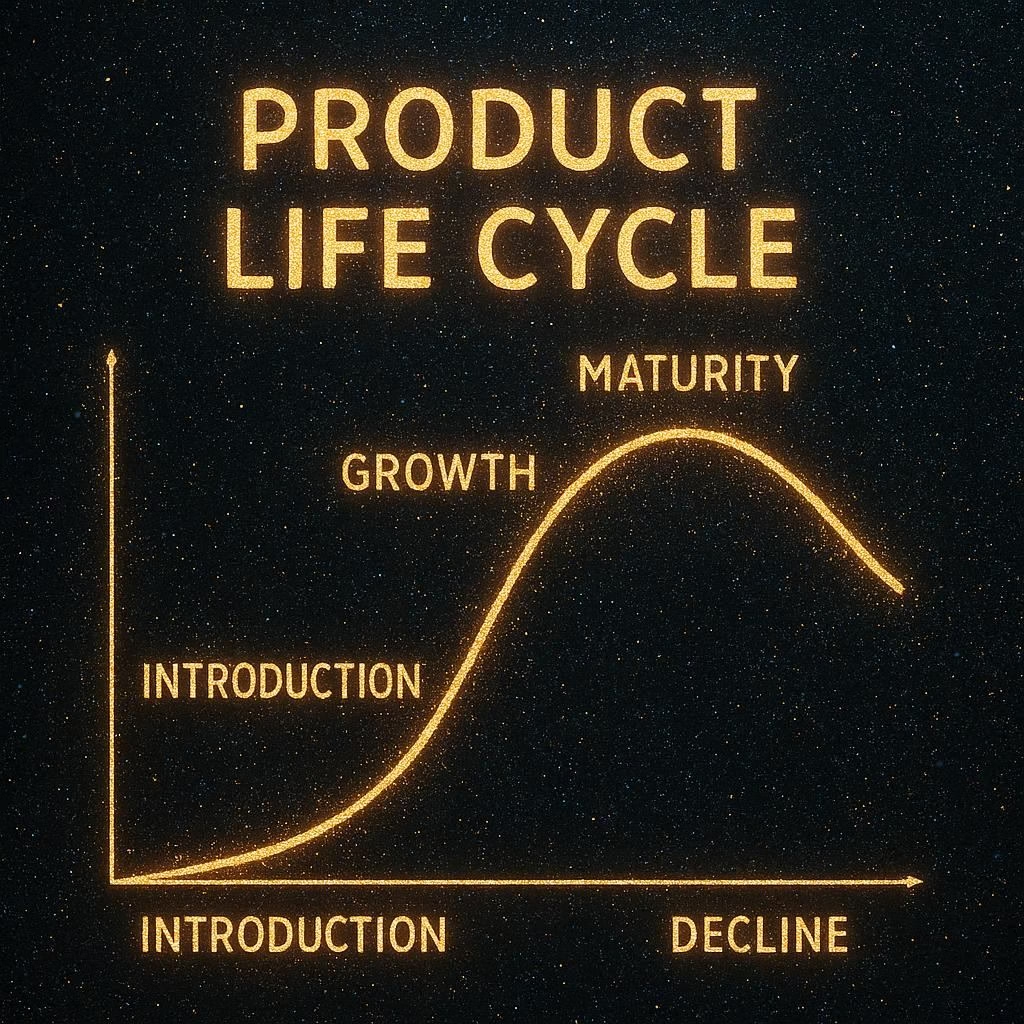Product Life Cycle Management is a business management approach that can be used by all type of businesses in order to improve the sustainability, performance and growth. A method that can be used by both large or small business organisations, its primary objective is to ensure more sustainable value chain management.
Life cycle management can be used to target, organise, analyse, manage product information and activities towards a continuous improvement along with the product life cycle.

Product Life Cycle
Product life cycle management integrate people, data, processes, business systems and provides a product informational backbone for companies and their extended enterprise.
The product life cycle (PLC) describes the stages a product goes through right from its development and introduction to the market, through its growth and maturity and finally to its decline and exit. These stages are development, introduction, growth, maturity and decline. Companies use the PLC framework to guide strategies for marketing, pricing and product development to optimize sales and profitability throughout a product’s lifespan.
The Importance of Product Life Cycle:
- Strategic Planning: It helps businesses develop tailored strategies for each stage, such as advertising, pricing and new market entry.
- Profitability: Understanding the PLC can help optimize profit margins and identify opportunities for innovation to extend the product’s life.
- Resource Management: Companies can forecast resource needs, manage inventory and plan production more efficiently.
- Market Understanding: It provides insights into customer behavior, competition and market trends at different points in a product’s journey.
Stages In Product Life Cycle:
The exact number of stages can vary, but the core stages include:
- Development: The product is developed before it’s launched into the market.
- Introduction: The product is launched, and sales grow slowly as the market learns about it.
- Growth: Sales begin to grow rapidly, with increasing competition as the product becomes more popular.
- Maturity: Sales growth slows, and the market becomes saturated. Branding and price become key for maintaining market share.
- Decline: Sales and profits decrease as the product becomes obsolete or less relevant to consumers.
Development:
The product is developed before it’s launched into the market.
Introduction:
Introduction is the very first stage, here, the product is introduced and launched in the market, sales grow slowly as the market learns about it. This phase is characterised by:
- Zero profits
- New product launch
- Low sales
- Promotional expenses
- Less profit

Growth Stage:
In this particular stage, the product is a market leader and is doing really well in its product market fit, sales begin to grow rapidly, with increasing competition as the product becomes more popular. It is characterized by:
- High demand for the product
- High profits
- Higher recognition
- Aggressive pricing
- Adding new features to the product as per the customers needs
- Introducing various new distribution channels
- Increasing the Franchise agents network
- Entering new markets
Maturity Stage:
In this stage, there is a steady decline in profits, sales growth slows and the market becomes saturated. Branding and price become key for maintaining market share. This phase is primarily characterized by:
- Decline in the sales and profit
- Slow growth rate
- Customers trying new products with new features
- Fierce competition
- More attention paid on sales promotion techniques
Decline Stage:
In this stage, sales and profit tend to be on the lower side as the product becomes obsolete or less relevant to consumers which is primarily characterised by:
- Many competitors present in the market
- Cutting down (reducing) the distribution channels
- Cutting down the promotional expenditures and ultimately the product is totally withdrawn from the market.
The Bottom-Line:
Every product has to go through the cycle of development, introduction, growth, maturity and decline as the consumer needs and preferences are quite evolving in nature. If the company is successful enough to cater to the needs of its customers on a consistent basis it might sustain but, nevertheless, evolution is the only element which help businesses to introduce new products, innovate new services and sustain & grow!
Broadly speaking, nearly every product sold undergoes the product life cycle. This cycle of product development, market introduction, growth, maturity and decline may vary from product to product, as well as from industry to industry.
Understanding this cycle can help a company make informed decisions about resource allocation, assess the outlook of its products and strategically plan for introducing new products to market.



